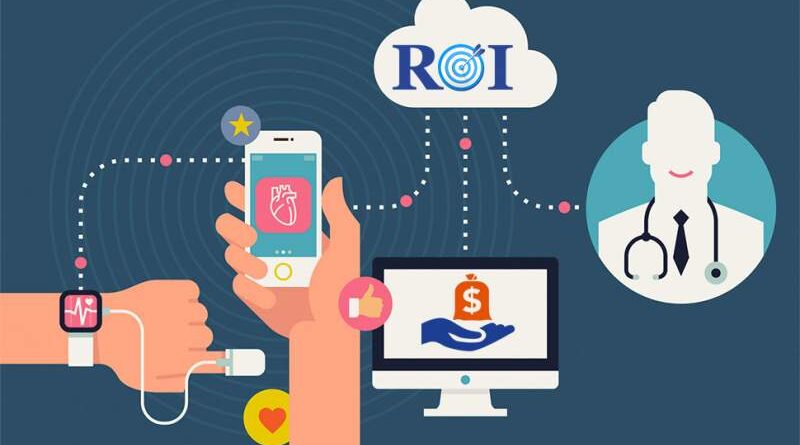Telehealth: Beyond FaceTime
By Mark Lo, MD, MS, Medical Director, Telehealth and Digital Health, Seattle Children’s

I was walking out of the emergency department after a busy shift the other day, and I passed a staff member who was taking her lunch break outside. She was marvelously managing to simultaneously fork pasta into her mouth while holding her mobile phone in her other hand, video conferencing with a loved one. Watching her effortlessly communicate her advice, body language, and empathy all via Internet audiovisual smartphone, I reflected on how the technology for telehealth has come of age. And yet, challenges remain for telehealth as it strives to gain traction in our healthcare industry.
Videoconference medicine should no longer be considered an innovation.
We should be using available technology and resources to meet 21st century patient and customer expectations of delivering healthcare over vast geographical distances. Any healthcare provider you know will share with you stories of how they field texts, images, and videos of family and friends clamoring for medical advice: “Is this serious? Do I need to go to the ER?” Mainstream technology and Internet savviness has advanced rapidly, but the hospitals have not kept up. The operational barriers for telehealth are significant, and it will take a robust commitment to enable ubiquitous use in everyday medicine. We want to get to the tipping point where providers see the patient during a visit, and the modality of in-person or virtual is an afterthought.
Telehealth is not a strategy in itself.
It may be a tactic to achieve strategic hospital aims, but it should never be viewed as the magic elixir to cure all operational woes. Telehealth may be seen as a catch-all solution for patient access, increasing utilization, bringing in new patients – all of the above. New telehealth projects may follow the impulses of dedicated provider champions who have the loudest voices and are willing to spend the time to start a new service line. When the hospital’s strategic goals are well-defined with specificity and resource commitment, then telehealth can be applied judiciously as one of many tactics, focusing on areas that best serve the hospital goals.
Redefine your telehealth ROI.
Telehealth research, as well as ongoing experience, are showing that telehealth is not a massive money-maker for hospitals. There can be real benefits when telehealth is applied as a cost-saving measure, especially in value-based care systems. It will be difficult for telehealth to show its value from a strict revenue-in and expense-out model. For telehealth to be seen as “worth it” for investment by a hospital, we need to recalculate a “value ROI” which demonstrates the importance of telehealth. The value equation may include items such as downstream revenue/long term value of retained patients, branding, savings associated with freeing up bed capacity or preventing transfer, cost savings from provider travel, bringing in new patients, saved provider time, saved patient travel miles, or patient/provider satisfaction. Value needs to be evaluated holistically over time and not limited to dollars alone, or else telehealth may have a more difficult time breaking even.
Commit to smooth out the pain points.
Although the horse has left the barn with regards to technology advances, telehealth still is responsible for the medical care of real people, which is a sacred charge. Federal, state, and local regulators are devising new requirements around telehealth. Hurdles around training and privileging, consent for virtual care, and licensing are several of the historical challenges that have faced widespread telehealth adoption. It is important to have solidarity between legal, compliance, privacy, IT, and clinical teams when it comes to hospitals committing to make standardized telehealth workflows as part of their service offerings.
Beware of widening the digital divide.
Technology can be sleek, features are engaging, bells and whistles are impressive. But telehealth doesn’t need to have the most advanced (and expensive) technologies. As you build your telehealth program, strive for equity in providing telehealth service across all demographics. Audiovisual calls eat up bandwidth, and there are households without WiFi or laptops or even smartphones. Portal access is a useful window into the Electronic Health Record, but portal adoption behind passwords and 2-factor authentication may leave some families out in the analog cold. Consider how interpretative services may be leveraged for multipresence telehealth visits, either in-person or virtually. Advanced digital health tactics and “wow” technology in of themselves are not the endgame – and should not be additional barriers to telehealth.
Pivot back to the housecall.
As I look to the future of where telehealth is going, it is unavoidable not to embrace remote monitoring and home-based virtual healthcare. As the healthcare landscape shifts more toward value-based care, rising costs of inpatient care will naturally drive healthcare to the home. This may take the form of earlier discharges with virtual monitoring and check-ins. It may look like frequent video visits with complex or chronic patients, in an attempt to assist them before they need emergent services. In the future, patients may be “virtually hospitalized” at home with advanced monitoring and audiovisual capabilities. I could envision a conglomeration of virtual “big data” from patient homes being fed into custom predictive algorithms that will alert healthcare systems when intervention will best be warranted. Patients will expect to be able to receive healthcare from the comfort of their home, just as they expect home services from a multitude of industries.
There can be real benefits when telehealth is applied as a cost-saving measure, especially in value-based care systems.
Embrace the relationship.
Ultimately, remember that telehealth is simply an avenue to allow a provider to care for a patient remotely. At its best, it is enhancing and promoting a relationship that is altruistic and empathetic in nature. Just like anyone taking a lunch break while video conferencing on a smartphone, engaging with people virtually on the other end is what connects us back to those who care for us and want to see us well.



